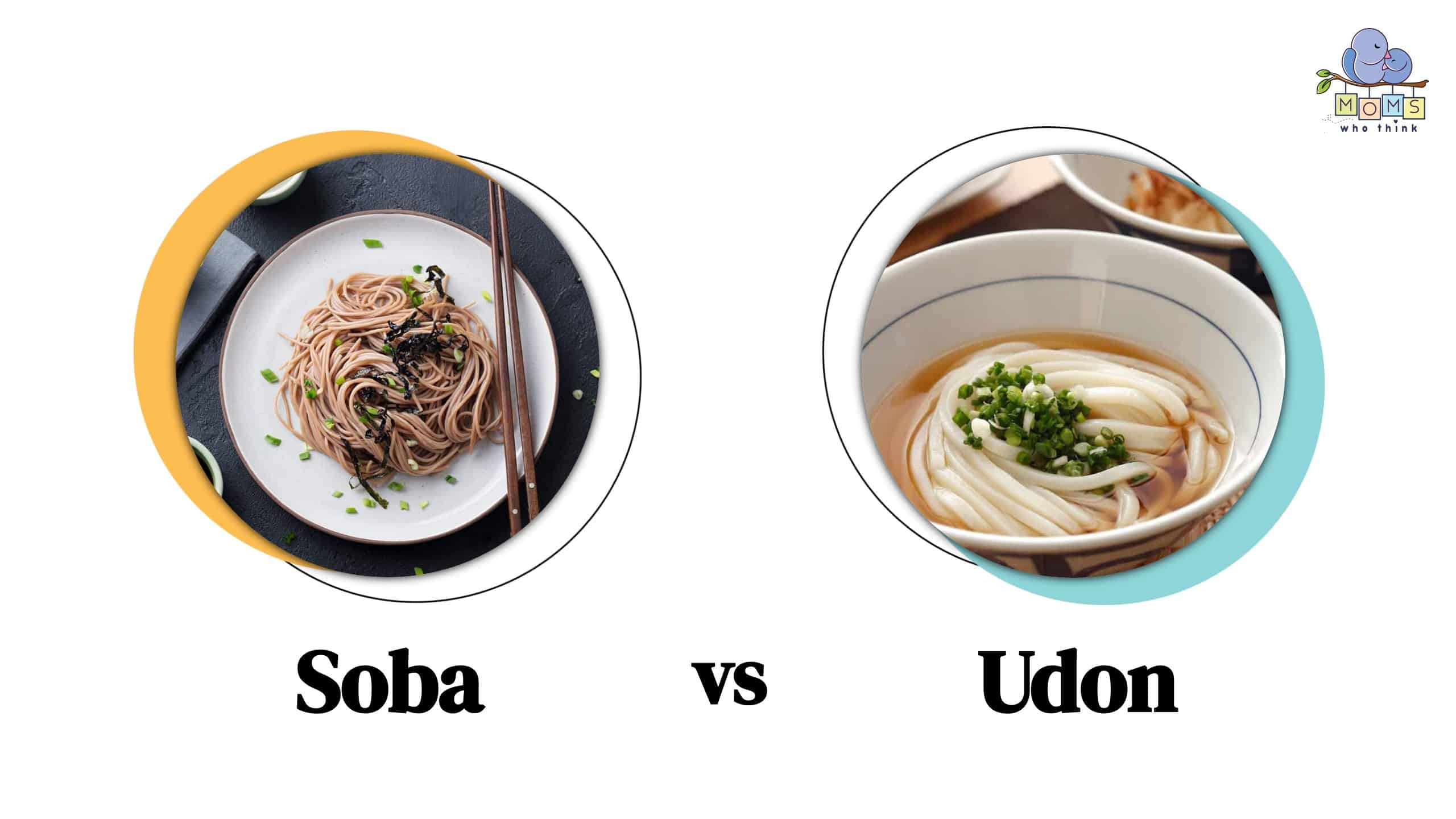Japanese noodles are popular around the world, and it’s easy to see why. Even though ramen noodles may be the most popular type, soba and udon come in as a close second. When it comes to soba vs. udon noodles, there are many differences between them including their ingredients, taste, and color.
Whether you’re ordering from your favorite Japanese restaurant or thinking about making Japanese noodles at home, keep reading to find out the difference in taste, nutritional value, and appearance of soba noodles vs. udon noodles.
- The must-have convenient reference guide for every home cook!
- Includes more than 8,000 substitutions for ingredients, cookware, and techniques.
- Save time and money on by avoiding trips to grab that "missing" ingredient you don't really need.
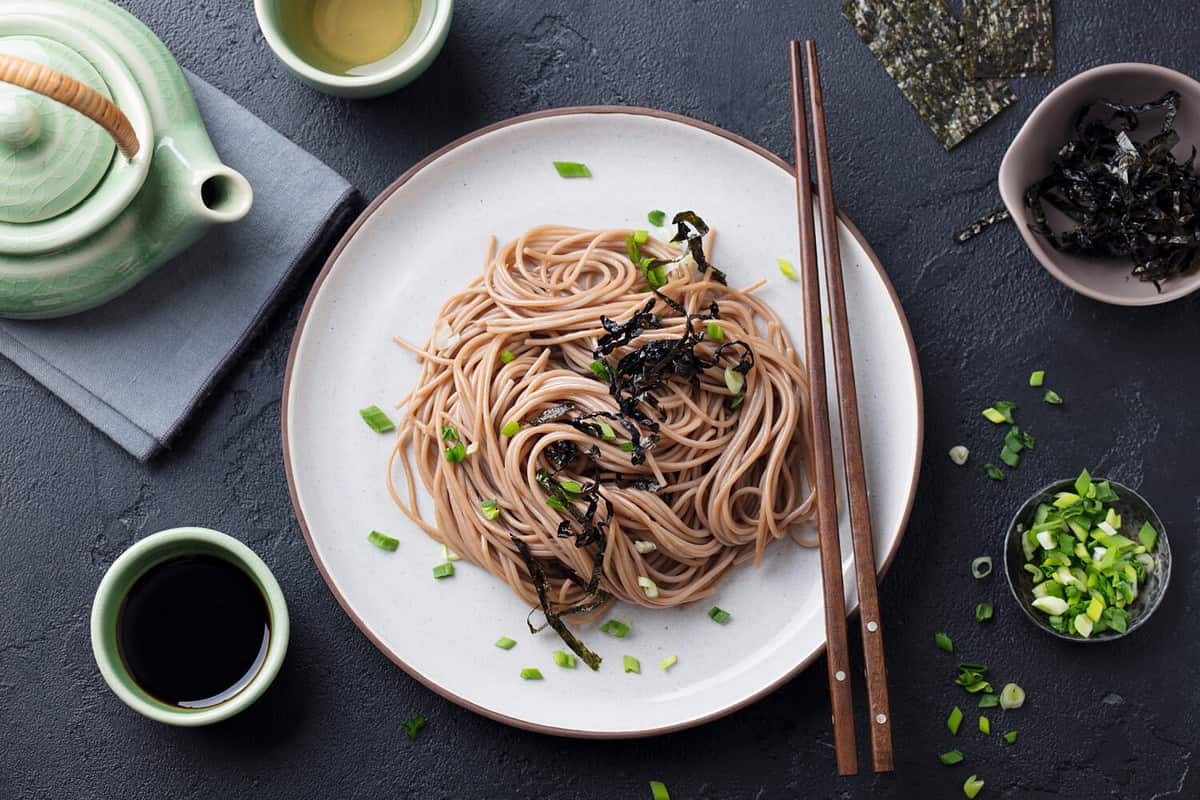
©Anna_Pustynnikova/Shutterstock.com
Soba vs. Udon Noodles: What Is the Difference?
The primary difference between soba and udon noodles is their ingredients with soba noodles being made from buckwheat flour while udon noodles are made from wheat flour. This ingredient difference leads to soba noodles having a darker color, firmer and grainy texture, and nutty flavor. Meanwhile, udon noodles are thicker, softer, and chewy with a more neutral flavor.
While both noodles are versatile, soba noodles are popular in the summer when they're served cold with a dipping sauce. Their delicious nutty flavor goes great in salads, soups, or paired with stir-fried vegetables. The thickness of udon noodles makes them the perfect choice for soups or broths since they don’t fall apart as easily.
Finally, the two noodles differ in nutritional value. Soba noodles are generally healthier, with more protein and fiber compared to udon noodles.
Let's examine each noodle in more detail.
What Are Soba Noodles?
For many, Japanese noodles are the ultimate comfort food. Whether you choose a stir-fried noodle dish or a delicious soup like Kake Soba, you can use noodles like soba in a variety of dishes.
Soba noodles are delicious and healthy noodles that pair well with a myriad of sauces. These buckwheat flour noodles are thin and look similar to spaghetti as far as their shape and size.
Due to their unique earthy flavor, they are often used in salads or served cold with dipping sauce. Although they can be used in soups, they don’t hold up as well as udon or ramen noodles due to their thinness.
Popular Soba Dishes
You can use soba noodles to create numerous dishes, but they’re usually mixed with sauce and served hot or cold. Here are some of the most popular soba dishes:
- Kake Soba- also known as New Year’s Even Soba Noodle Soup, this dish is prepared by combining soba noodles with broth, green onion, and seaweed.
- Yakisoba- this is a stir-fried noodle dish made with wheat-based soba noodles. The sauce used in Yakisoba is similar to Worcestershire sauce.
- Tempura Soba- this classic Japanese dish is similar to Kake Soba since the noodles are placed in a broth, but it’s topped with deep-fried tempura. It can include vegetable or shrimp tempura.
- Zaru Soba- Zaru soba is sometimes known as cold soba noodles. It’s a chilled noodle dish that’s served with cold broth and a sesame oil or vinegar-based dipping sauce.
- Tsukimi Soba- Tsukimi soba is similar to Kake Soba, but it includes a raw egg on top. To make this dish, you crack a raw egg over the hot soup immediately after pouring it.
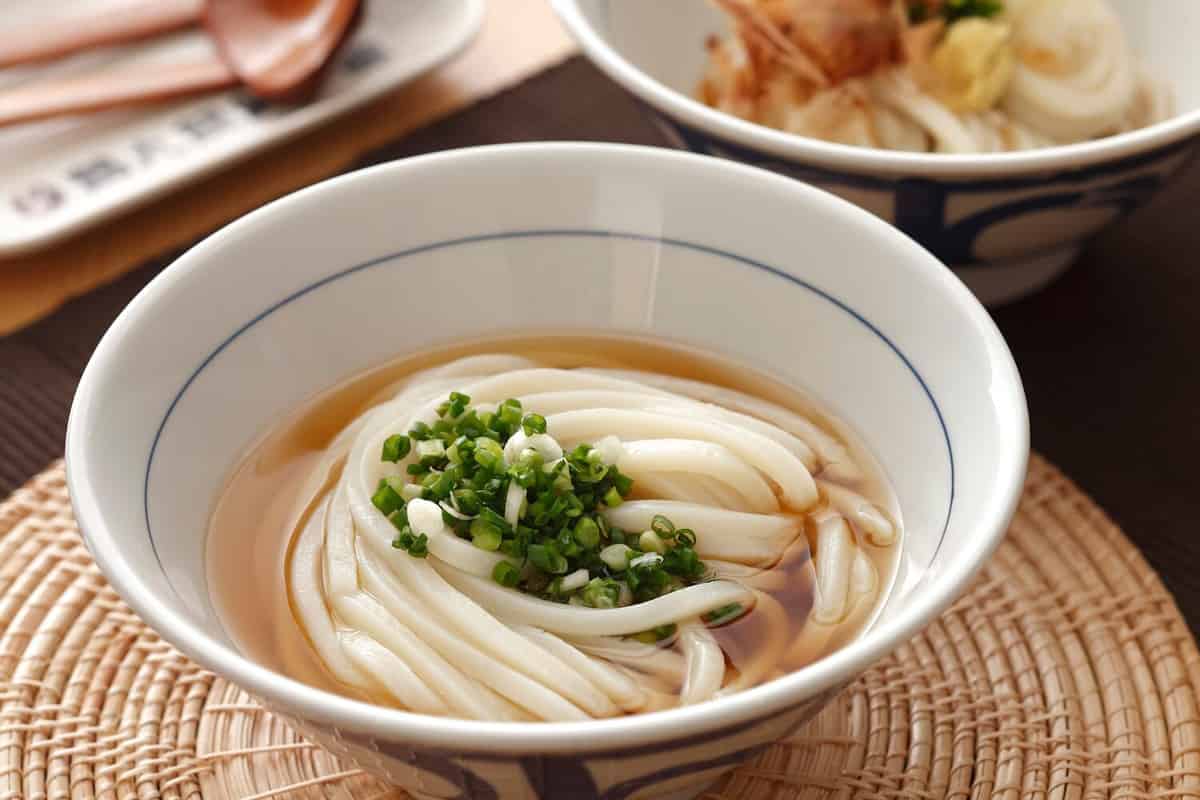
©Coolscene/Shutterstock.com
What Are Udon Noodles?
Compared to soba noodles, udon noodles are thick, chewy, and salty. Udon dough is made by combining wheat flour, water, and salt. These noodles are much thicker than soba noodles and come in either a flat or rounded shape.
The shape and thickness of udon noodles make them perfect for soups and other similar dishes since they hold up well in broth. Despite their popularity as a base for soups, they’re also sometimes served cold with dipping sauce.
Popular Udon Dishes
Udon noodles are chewy, salty, and comforting in any dish. Here are some of the most popular dishes made with udon noodles:
- Kake Udon- this dish is similar to Kake Soba but made with udon noodles instead. The noodles are added to a simple dashi soup with soy sauce and other seasonings.
- Yaki Udon- like Yakisoba, this stir-fried dish includes noodles mixed with a soy-based sauce. It often includes vegetables and a type of protein as well.
- Miso Nikomi Udon- this dish is often called Miso-stewed udon. In this classic meal, the udon noodles come with a noodle soup made with Miso paste.
- Curry Udon- this noodle dish is a combination of udon noodles with a curry-flavored soup. Meat or vegetables are often included in the soup as well.
- Tempura Udon- this meal is similar to Tempura Soba, and includes savory broth with udon noodles and vegetable or seafood tempura on top.
Can You Substitute Soba Noodles For Udon Noodles?
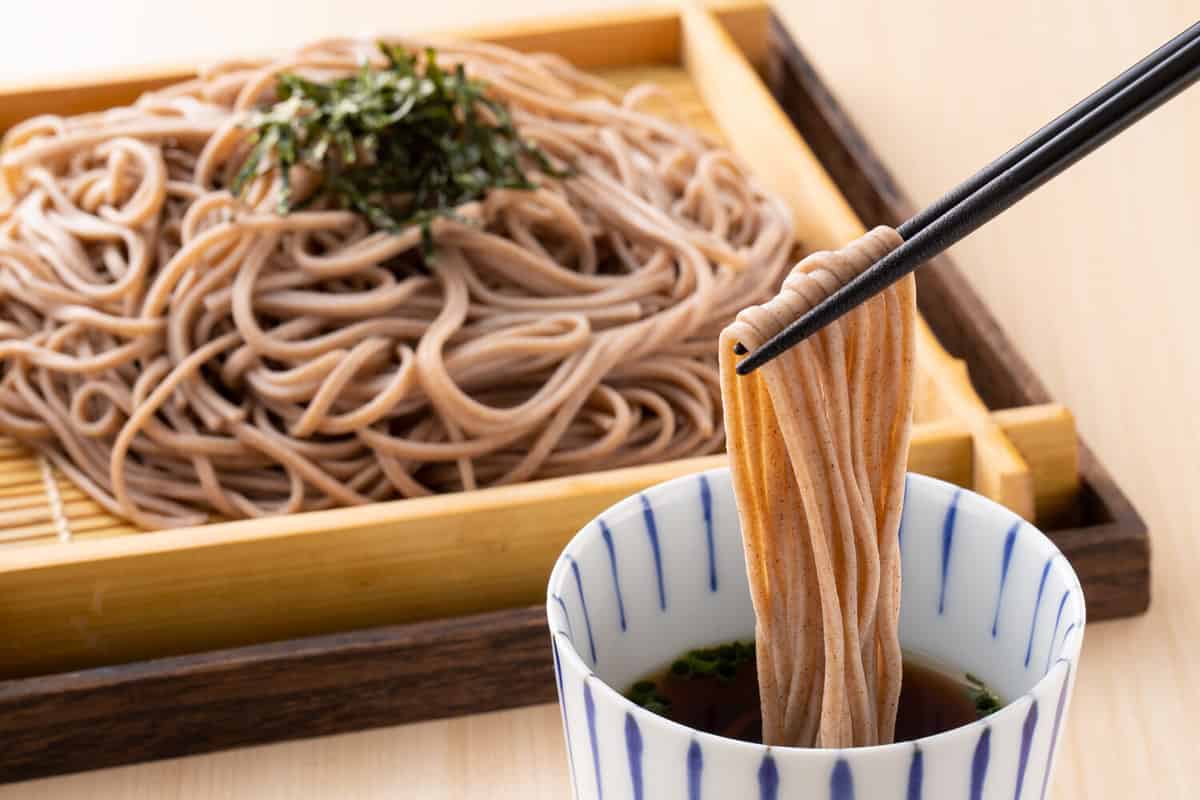
©jazz3311/Shutterstock.com
Soba and udon noodles are both popular and versatile Japanese noodles. If you’re making your own meal with these noodles at home, you might wonder if you can use soba noodles as a substitute for udon noodles.
- The must-have convenient reference guide for every home cook!
- Includes more than 8,000 substitutions for ingredients, cookware, and techniques.
- Save time and money on by avoiding trips to grab that "missing" ingredient you don't really need.
Despite their different textures and flavors, you can use soba noodles as a substitute for udon noodles and vice versa. If you do swap out one for the other, you may need to adjust your ingredients or cooking time. Soba noodles have a much thinner texture, so if you use them with a heavy sauce or in a hot soup, they are more likely to break apart. This won’t harm the dish, but it may not be as satisfying as having udon or a similar noodle that has more of a bite to it.
Are Soba Noodles Healthier Than Udon Noodles?
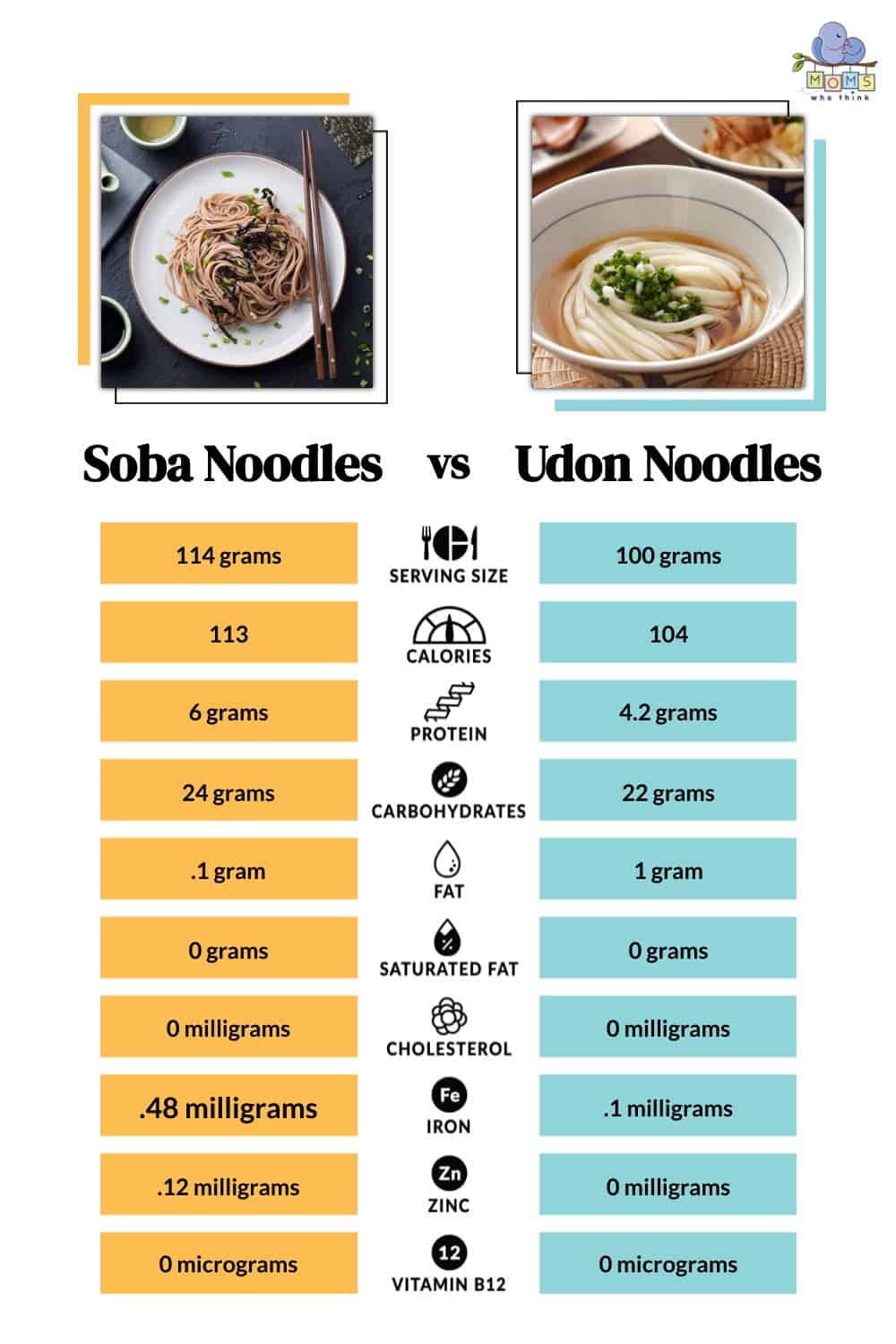
Both soba and udon noodles are relatively healthy due to the type of flour used to make them. Although udon noodles can also be a healthy choice, soba noodles are often considered one of the healthiest types of noodles due to their main ingredient being buckwheat flour.
Buckwheat is lower in carbs and calories than other types of flour. It also has many health benefits as a whole grain. Buckwheat is good for your heart, rich in fiber, and high in protein.
Udon noodles are also considered healthy since they’re made of wheat flour. Wheat itself is beneficial to your health as a source of energy, starch, protein, and vitamins. On their own, both soba and udon noodles can be a healthy part of a balanced diet. How you choose to prepare the noodles is going to impact their nutritional value the most.
Nutritional Value of Soba vs. Udon Noodles
Another difference between soba noodles and udon noodles is their nutritional value. Soba noodles are often considered healthier than udon noodles due to the benefits of buckwheat flour. Let’s take a look at how they hold up when it comes to nutritional values:
| Nutritional Values | Soba Noodles (114 grams) | Udon Noodles (100 grams) |
| Calories | 113 | 104 |
| Protein | 6 g | 4.2 g |
| Total Fat | 0.1 g | 0.9 g |
| Carbs | 24 g | 22 g |
| Calcium | 4 mg | 10 mg |
| Iron | 0.48 mg | .1 mg |
| Cholesterol | 0 mg | 0 mg |
| Sodium | 60 mg | 50 mg |
| Potassium | 35 mg | N/A |
Takeaway
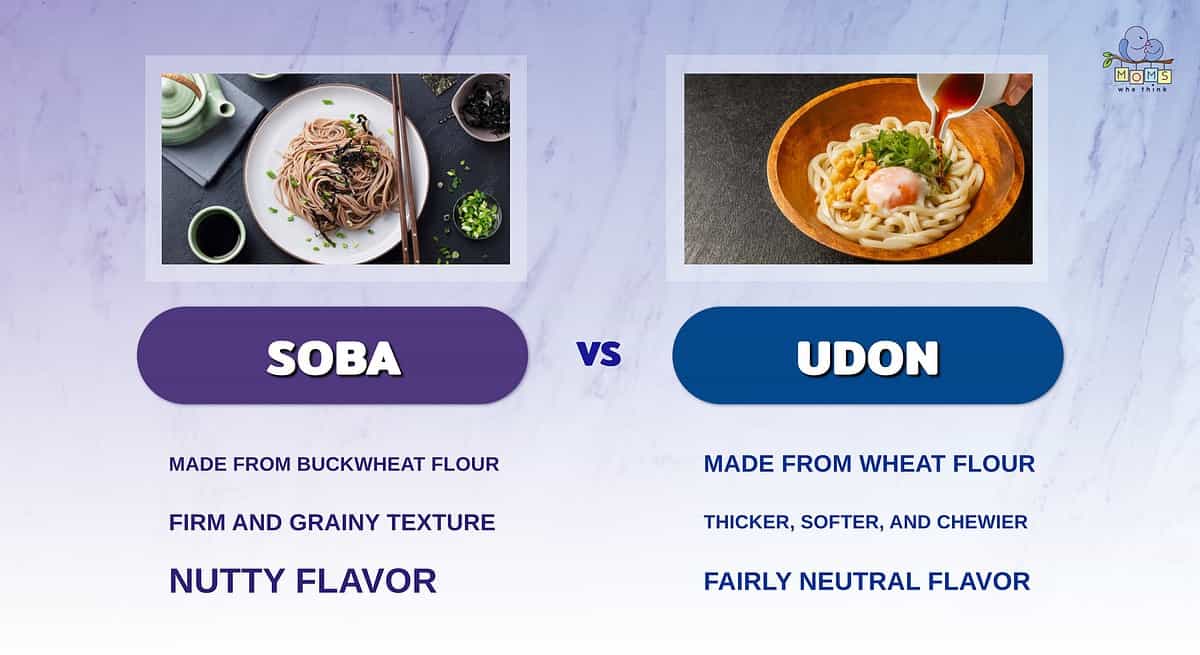
- Soba noodles are made from buckwheat flour, while udon noodles are made from wheat flour. This may seem like a small difference, but it's actually a huge one. The use of buckwheat flour is what gives soba noodles their darker color.
- Udon noodles are thicker, softer, and chewier than soba. Soba noodles have a firm and grainy texture.
- The use of buckwheat flour gives soba noodles a nutty flavor, contrasting the fairly neutral flavor of udon noodles.
Soba and udon noodles make a delicious meal no matter how you cook them. Both are versatile and can go well with a number of dishes, but there are several major differences between them.
Unlike udon noodles, soba noodles are made with buckwheat flour while udon noodles are made from wheat flour. Buckwheat flour and wheat flour both have numerous benefits and can be a nutritional part of your diet.
Udon noodles have a thicker shape, making them perfect for use in soups. Soba noodles are lighter, thinner, and perfect when tossed with your favorite sauce. No matter which type of noodle you choose, they’re both bound to satisfy your taste buds in your favorite Japanese dish.
You need to try this Asian noodle bowl:
PrintAsian Noodle Bowl with Soba Noodles
Ingredients
8 ounce dry buckwheat soba noodles
2 cups vegetables broth
1/2 cup bottled peanut sauce
2 cups Chinese-style frozen stir-fry vegetables
1/2 cup dry roasted peanuts, chopped
Instructions
1. Cook noodles according to package directions; drain but do not rinse. Set aside.
2. In the same pan, combine broth and peanut sauce. Bring to a boil.
3. Stir in frozen vegetables and cooked noodles, return to boil, reduce heat.
4. Simmer for 2 to 3 minutes or until vegetables are heated through.
5. Divide noodles and broth among 4 bowls.
6. Sprinkle with peanuts.
